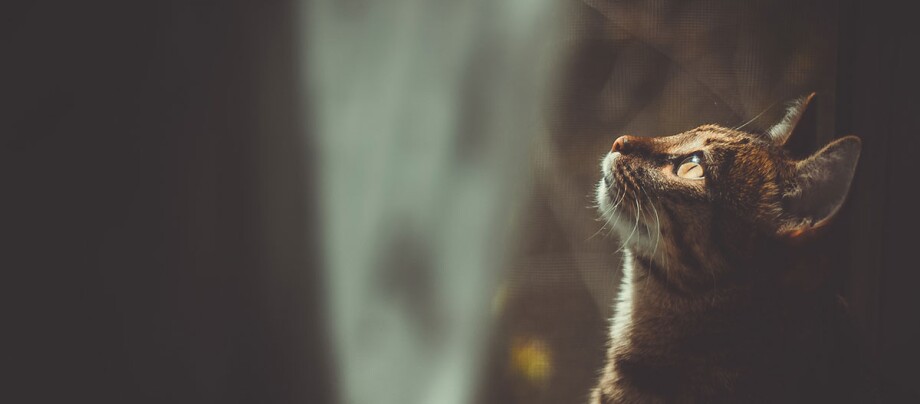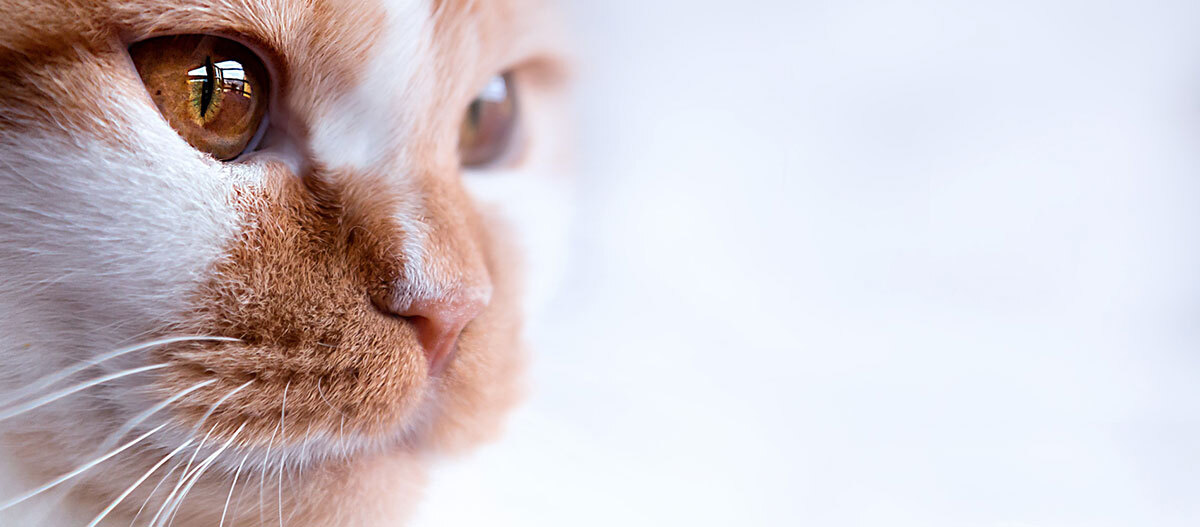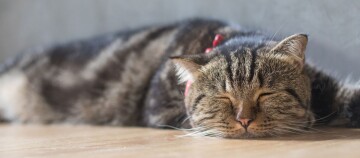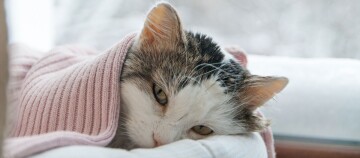Can Cats See Colours? Cat Senses and the Anatomy of the Cat Eyes
17.10.2022 - Reading time: 5 minutes

Your cat has a clear view: Even in very poor lighting conditions, a cat's eye is still able to make out small details. Nothing escapes the animal. The cat owes its proverbial sharp vision to the refined anatomy of its eye, but the cat's eye is not superior to human vision in all areas.
How do cats see? - anatomy of a cat's eye
When you look at your cat’s face, you notice that its eyes appear disproportionate compared to the rest of its head. These unusually large eyes are characteristic for the appearance of a domestic cat. The inscrutable, mysterious look is based in our perception on the slit-shaped, vertically positioned pupils, which can dilate extremely in poor lighting in order to use as much light as possible. Thanks to the third eyelid, the so-called nictitating membrane, a cat’s eye is permanently moistened with tear fluid. This explains why cats don’t need to blink: they can stare down anything. That, too, is part of the fascination of the cat’s eye.
The lenses in a cat’s eye are multifocal, so the animals have very high visual acuity. Behind the retina is a reflective pigment layer that reflects incident light. This is the reason for the effect that cat’s eyes seem to glow in the dark, depending on the angle of incidence of the light. This layer, scientifically called tapetum lucidum, also helps the cat with twilight vision. The light hitting the eye is practically used twice through reflection. The rod cells and cones, the neurons responsible for transmitting visual stimuli to the brain, are about three times as numerous as in humans, so that the cat can perceive much more differentiated optical signals. However, the eyes themselves are hardly movable – to look in another direction, the cat has to move its head.
Due to its forward gaze, in which the visual axes of both eyes overlap, the cat has excellent spatial vision and a wider field of vision than a human compared to other animals. This explains the precision with which the animal catches even small, vertically moving targets with pinpoint accuracy when hunting and playing, and also notices what is happening in its peripheral field of vision. However, the distance vision of cats is less good. The cat’s best visual acuity is in the range of four to six metres. In indoor-only cats, the optimal visual acuity range is somewhat shifted and lies between two and six metres.
Can cats see colours?
Surprisingly, cats can see very sharply, but their perception of colours is limited. It has been proven that cats can see colours. The structure of the cones in the eye suggests that they can distinguish the colours blue, yellow and green well – the animals do not recognise red tones. You can imagine this as if the cat were looking at the world through a blue-violet or yellow-green filter. In everyday cat life, however, the differentiation of colours is of little importance anyway. The perception of movement in the immediate environment is far more important for a prey hunter. Nevertheless, zoologists at the University of Mainz found in experiments that cats apparently have a particular soft spot for the colour blue.
Can cats see in the dark?
In complete darkness, a cat’s sense of sight is also switched off. If it enters a windowless room with the door closed, the animal cannot see anything. However, the anatomy of the eyes enables the cat to perceive even the smallest amounts of light: When out and about at night, it is never so dark around the cat that it is not still possible to make visual use of residual light. Compared to human vision, a cat needs only about one sixth of the amount of light to be able to perceive an image visually. This is due to the considerably higher density of visual receptors and the extremely dilated pupils.

How does a blind cat cope in everyday life?
Whether as a result of an accident or a disease, it sometimes happens that a cat goes blind or loses an eye. Blindness can also occur when the animal is of an advanced age. This means that one of the most important sensory functions of the animal is lost. Nevertheless, it can happen that cat owners do not notice at all for quite a while that their cat has gone blind. Many cats seem to be able to cope with limited vision. How do they manage? Dogs in a similar situation rely on their sense of smell. But how well can cats smell? Is that enough to cope with everyday cat life?
In fact, blind cats resort to their excellent sense of smell, but also to their highly developed sense of touch and hearing. The cat quickly learns, for example by locating the voice or vibrations of the floor, to determine the source of movements or the position of its human in space.
For its own safety, a completely blind cat should not be allowed to go outdoors. Inside the home, take care not to move furniture and other landmarks that could become a tripping hazard for the cat. The cat should be able to find the litter tray, bowl and other cat accessories literally “blind”.



